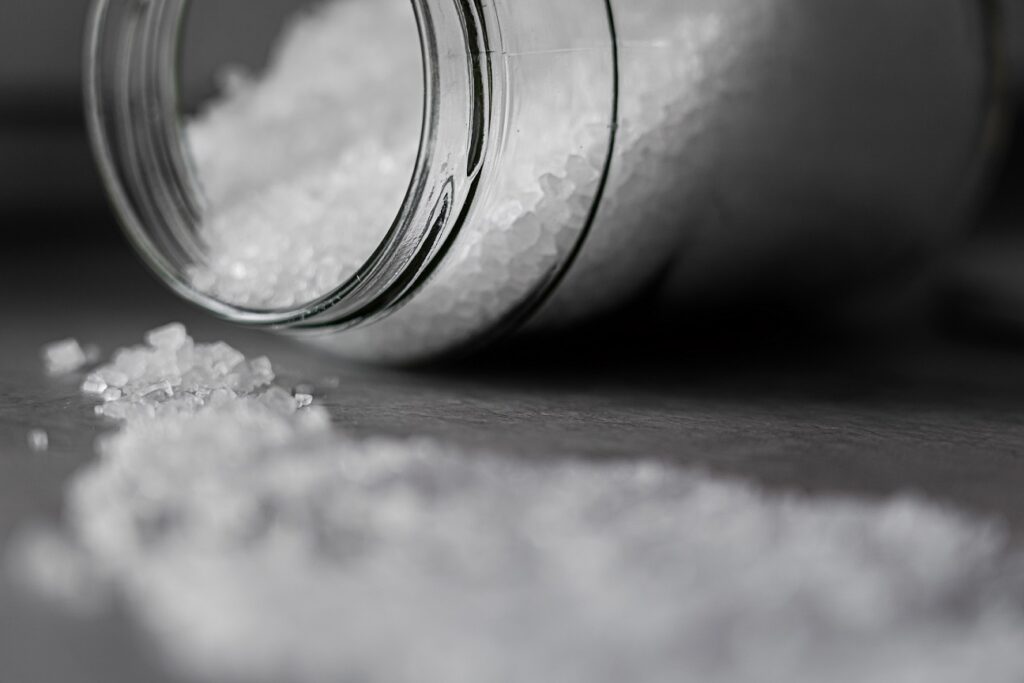Salt, also known as sodium chloride, is a common ingredient found in many foods and plays a significant role in flavor enhancement and food preservation. However, excessive salt intake has been strongly associated with high blood pressure, or hypertension, which is a major risk factor for cardiovascular disease. In this article, we will explore the relationship between salt intake and blood pressure and discuss the importance of managing salt consumption for overall health.
Salt and Blood Pressure:
Sodium is an essential mineral that is necessary for maintaining proper fluid balance, transmitting nerve impulses, and supporting muscle function in the body. However, consuming too much sodium can lead to increased blood volume and subsequently raise blood pressure. When the blood pressure remains consistently high, it puts strain on the heart and blood vessels, increasing the risk of heart disease, stroke, and other health complications.
The Link between Salt Intake and Blood Pressure:
Numerous scientific studies have demonstrated a clear link between high salt intake and elevated blood pressure. When sodium intake exceeds the body’s requirements, the kidneys have difficulty removing the excess sodium from the bloodstream. As a result, water retention occurs, increasing the volume of blood in the blood vessels and putting pressure on the arterial walls. Over time, this can lead to hypertension.
The Impact of Salt Sensitivity:
It is important to note that not everyone responds to salt intake in the same way. Some individuals are more sensitive to the effects of salt on blood pressure, while others may have a lower sensitivity. Salt sensitivity is influenced by various factors, including genetics, age, race, and underlying health conditions. People who are salt-sensitive may experience a more pronounced increase in blood pressure in response to high salt intake.
Recommended Salt Intake:
To maintain healthy blood pressure levels and overall cardiovascular health, it is essential to manage salt consumption. The American Heart Association (AHA) recommends limiting sodium intake to no more than 2,300 milligrams (mg) per day, which is roughly equivalent to one teaspoon of salt. However, for certain population groups, such as individuals over the age of 50, those with high blood pressure, or those with other health conditions, including diabetes or kidney disease, the AHA suggests a lower limit of 1,500 mg per day.
Tips for Reducing Salt Intake:
1. Read Food Labels: Start by reading food labels carefully. Sodium content is listed on the nutrition facts panel. Choose lower-sodium options and be mindful of hidden sources of sodium, such as canned soups, processed meats, condiments, and snack foods.
2. Cook from Scratch: Preparing meals at home allows you to have control over the ingredients and the amount of salt used. Use fresh herbs, spices, and other flavor-enhancing ingredients to reduce reliance on salt for taste.
3. Choose Fresh Foods: Opt for fresh, whole foods whenever possible, as they naturally contain less sodium compared to processed and packaged foods. Include a variety of fruits, vegetables, lean proteins, and whole grains in your diet.
4. Limit Processed and Packaged Foods: Processed and packaged foods often contain high amounts of sodium as a preservative. Minimize consumption of items like deli meats, canned soups, instant noodles, and salty snacks.
5. Be Mindful Eating Out: When dining out, ask for low-sodium options or request that your meal be prepared with minimal salt. You can also request condiments and dressings on the side to control the amount of sodium added.
6. Experiment with Herbs and Spices: Enhance the flavor of your meals with herbs, spices, citrus juices, and vinegar instead of relying on salt. Experiment with different combinations to discover new tastes and create flavorful dishes.
7. Be Aware of Hidden Sodium: Be cautious of condiments, salad dressings, soy sauce, and other flavorings that can be high in sodium. Opt for low-sodium or reduced-sodium versions, or try making your own homemade alternatives using herbs, spices, and vinegar.
8. Rinse Canned Foods: If you consume canned beans, vegetables, or other canned goods, rinse them thoroughly under running water to reduce the sodium content. This can help remove excess sodium used in the canning process.
9. Limit the Use of Salt in Cooking: Gradually reduce the amount of salt you add to your cooking. Over time, your taste buds will adjust, and you will become accustomed to the natural flavors of the ingredients.
10. Be Mindful of Hidden Sodium in Medications: Some medications, such as antacids and certain pain relievers, can contain sodium. If you have hypertension or are watching your salt intake, consult with your healthcare provider or pharmacist to ensure your medications do not contribute to your sodium consumption.
The Importance of Moderation:
While it is important to manage salt intake, it’s also crucial to note that sodium is an essential nutrient needed by the body in small amounts. The key is to strike a balance and consume salt in moderation. Complete elimination of salt is not advisable, as it can lead to electrolyte imbalances and other health issues. It’s about being mindful of the sources and quantity of salt in your diet and making informed choices.
Reducing salt intake is an effective dietary strategy for managing blood pressure and promoting overall cardiovascular health. By adopting healthier eating habits, such as choosing fresh foods, cooking from scratch, reading food labels, and being mindful of hidden sources of sodium, you can gradually reduce your salt intake and lower your risk of hypertension-related complications. Remember that small changes can add up over time, and it’s about making sustainable lifestyle choices that support long-term health. Consult with your healthcare provider or a registered dietitian for personalized advice and guidance on managing your salt intake and maintaining healthy blood pressure levels.

